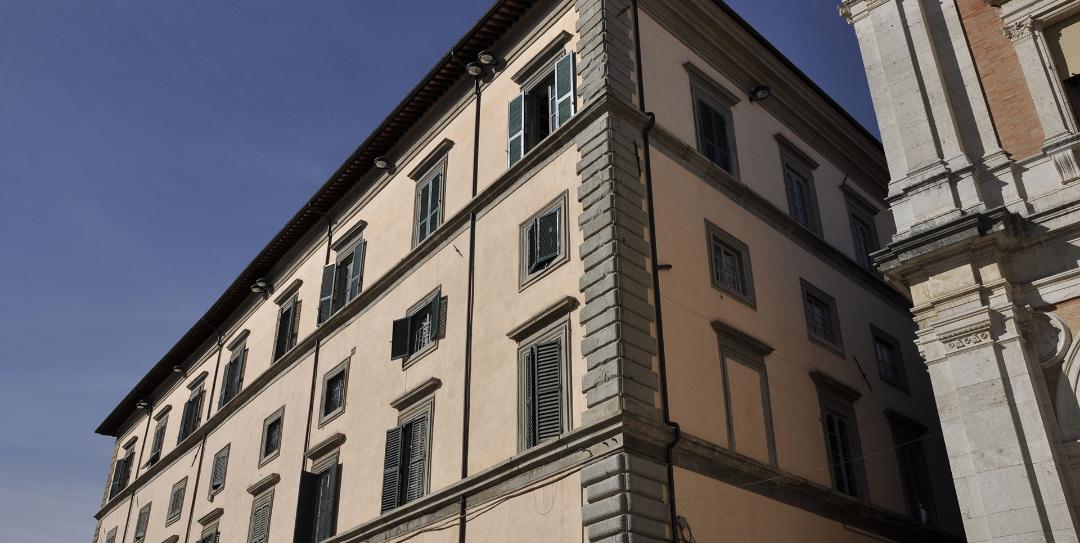There was a succession of owners over the years, the most notable of whom was the antiquarian Elia Volpi who contributed to the restoration of the palace restoring it to its former glory. In 1912 the last owner donated the palace to the city on the condition it was used as the municipal art gallery. The art gallery has a wealth of masterpieces, enhanced by frescoes by Cristofano Gherardi, also called 'il Doceno', and Cola dell'Amatrice running from the large staircase, where there are mythical and allegorical figures. In the Great Hall the exploits of Hannibal, Scipio, Caesar and Alexander the Great are depicted, at the request of Alessandro Vitelli, Commander, to highlight his military skills. Of the works of art preserved in the art gallery, the oldest is the Great Altarpiece dating from the early fourteenth century, depicting the Madonna and Child with Angels by the Master of Città di Castello, a sensitive Sienese painter and follower of Duccio. There are also important works by Luca Signorelli, Raphael, Ghirlandaio, Antonio Vivarini, Giusto di Gand, Raffaellino del Colle and Pomarancio all of which contribute to making the collection one of the most beautiful in Umbria. The furniture on display originates mainly from local churches and convents.
Bibliography
Zangarelli M. (2000), Città di Castello – Le città e i territori, Octavo Editore.
Tacchini A. (1988), Città di Castello, 1860-1960: la città e la sua gente, Città di Castello, Petruzzi.
Tagliaferri A. (1991), Romani e non romani nell'alta Val Tiberina: da una ricerca archeologica di superficie, Udine, Del Bianco.
Tacchini A. (1992), L'alta valle del Tevere in cartolina, Città di Castello, Petruzzi.
Tacchini A. (1996), Città di Castello e il suo territorio in piante e carte d'archivio, Città di Castello.
Tacchini A. (2000), Artigianato e industria a Città di Castello tra Ottocento e Novecento, Città di Castello, Petruzzi.
Zangarelli M. (2000), Città di Castello – Le città e i territori, Octavo Editore.
T.C.I. (2004), Umbria, Milano, Touring Editore.






























